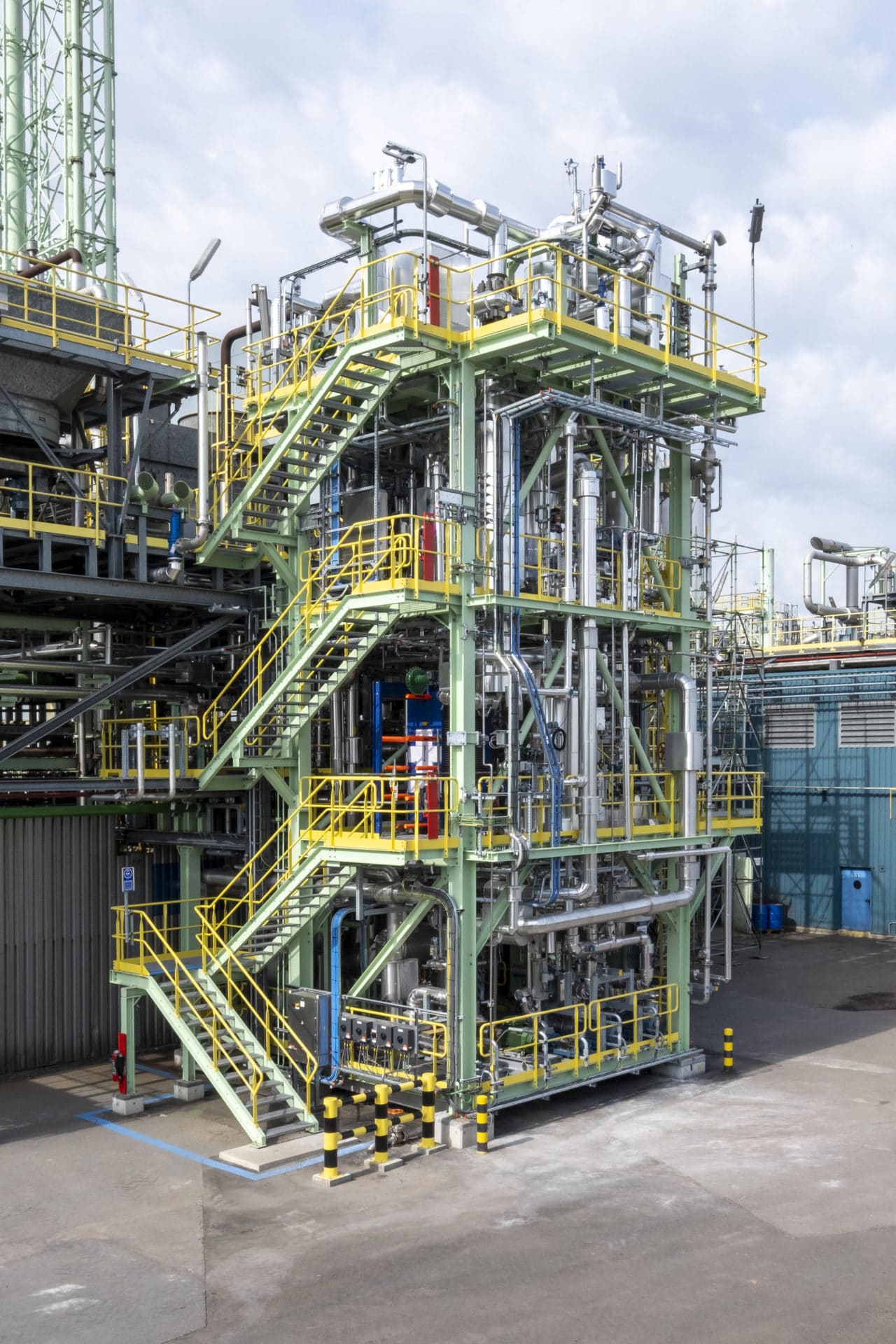Qpinch’s heat transformer a natural solution

Biomimicry is hardly new. In fact, one of the earliest examples of biomimicry was the study of birds to enable human flight – a study that was later brought to reality thanks to the Wright Brothers, who succeeded in flying the first heavier-than-air aircraft in 1903. The rest, as they say, is history.
Beyond the intricacies of human flight, biomimicry has been utilized for a multitude of other purposes including architecture, medicine and technology. In the case of Belgium start-up Qpinch, nature-inspired innovation has led to breakthrough technology.
“The [refining and petrochemicals] industry consumes heat and electricity, and much of this process heat is made with fossil fuels,” explains Erik Verdeyen, Chief Evangelist at QPinch. “When all this heat comes out, it degrades to waste heat… So we’ve found a new way to capture this waste heat and turn it back into process heat. We don’t use mechanical compression like other heat pump technologies, but we use chemistry; a reversible chemical reaction with phosphoric acid to perform this.”

Introducing the heat transformer
Dubbed the “heat transformer”, this solution draws inspiration from humanity’s first muse – nature itself.
“If you look at nature, there are a lot of cool things to see,” enthuses Verdeyen. “We’ve had a lot of inspiration in science and applied science from nature, and our inspiration comes from the ATP-ADP cycle, which you see in all living cells in all animals and plants and humans, in the energy system.
The cycle works well at low temperatures like our body temperatures, so it’s unsuitable for industry use as-is, but the basis of the ATP-ADP cycle* lies in phosphates. So, we looked at phosphates to perform the same chemical reversible chemical reaction for industrial applications at much higher temperatures, and chose phosphoric acid.
Our inspiration comes from nature, where it works at a very, very small size… And we scaled up with Borealis to a mega, industrial scale – and that is so cool!”
By using a chemical process to raise the temperature of waste heat, Qpinch’s heat transformer provides a heat lift for waste heat that could otherwise not be utilised. Unlike the use of conventional heat pumps, this closed-loop process minimises operational costs as well as electricity use. The technology is scalable from one to 50 megawatts (MW) and is therefore able to process enormous levels of industrial waste heat.

Case study: Antwerp
Earlier this year, Austrian chemical company Borealis announced its plans for an open-innovation collaboration with Qpinch, applying the company’s heat transformer technology on a commercial scale with the technical completion and start-up of a new demonstrational unit located in Antwerp.
Says Erik van Praet, VP Innovation & Technology at Borealis, “We have implemented the unit in an existing high-pressure, low-density polyethylene plant, which is in the chemical cluster. In fact, it started last April, quite successfully! We will be evaluating the technology and scale-up capabilities, to see how we can bring it to other locations for other Borealis technologies.”
According to a press release issued by Borealis, the start-up of this heat-recovery unit is one of several initiatives bringing Borealis closer to its Energy & Climate goal to be 20% more energy efficient by 2030 compared to 2015.
As things currently stand, the new heat recovery unit in Zwijndrecht/Antwerp alone will enable Borealis to save approximately 2,200 tons of CO2 per year, or the equivalent of the annual emissions of around 1,500 compact cars.
But how does Qpinch’s heat transformer compare to existing solutions? Says van Praet, “If you look at Qpinch, the beauty of it is that it doesn’t produce any CO2, so you don’t have to capture any more as compared to carbon capture and storage (CCUS) solutions. Qpinch’s technology also delivers energy, which is useful and in fact a great advantage if you compare it to electrification. The Qpinch process is mainly derived from residual waste and a little bit of electricity.”
Adding on, Verdeyen says, “Let’s not forget that we face a big challenge in the industry and the world – we need to curb our emissions, and we need to do it fast. So in this industry you have three options, basically: You can go for electrification, which in many areas will be costly; You can go for CCUS, which are additional cost on top of your production cost; And you have energy efficiency, which has already been done.
In Europe, historically, energy prices have been very high, and you see all these petrochemicals that are very efficient, or many of them that have invested in energy efficiency over the past decades. We’re now bringing a new level of energy efficiency there. We’re focusing primarily on regions where you have a combination of higher energy prices and CO2 taxation.
The good news for us is that with the EU stressing for a border tax, it’s very likely that markets in the US and Asia are going to follow suit and implement some sort of CO2 taxation… And I think our solution will become much more interesting for those regions as well.”
Qpinch at the ARTC
Looking to the near future, Verdeyen muses that it’s been two years since Qpinch attended the Asian Refining Technology Conference (ARTC), and that they will now be looking forward to showcasing case studies with Borealis, among other clients, at this year’s conference.
“The thing with digital lounges and events is that I was afraid we wouldn’t be able to connect to the audience,” explains Verdeyen. “But it was actually quite contrary – you don’t get the real vibe of meeting people and exchanging ideas and information, but on the plus side I’ve noticed that many more people attend your session – so even while you miss out on live interaction with the audience, it’s still possible to do something.
What’s great for us is that for the first time, you see that emissions reduction is really at the top of the bill in all the conferences, and that’s what we have to offer. We’re excited to be speaking at ARTC this year.”
*In which ATP refers to adenosine triphosphate, and ADP to adenosine diphosphate.